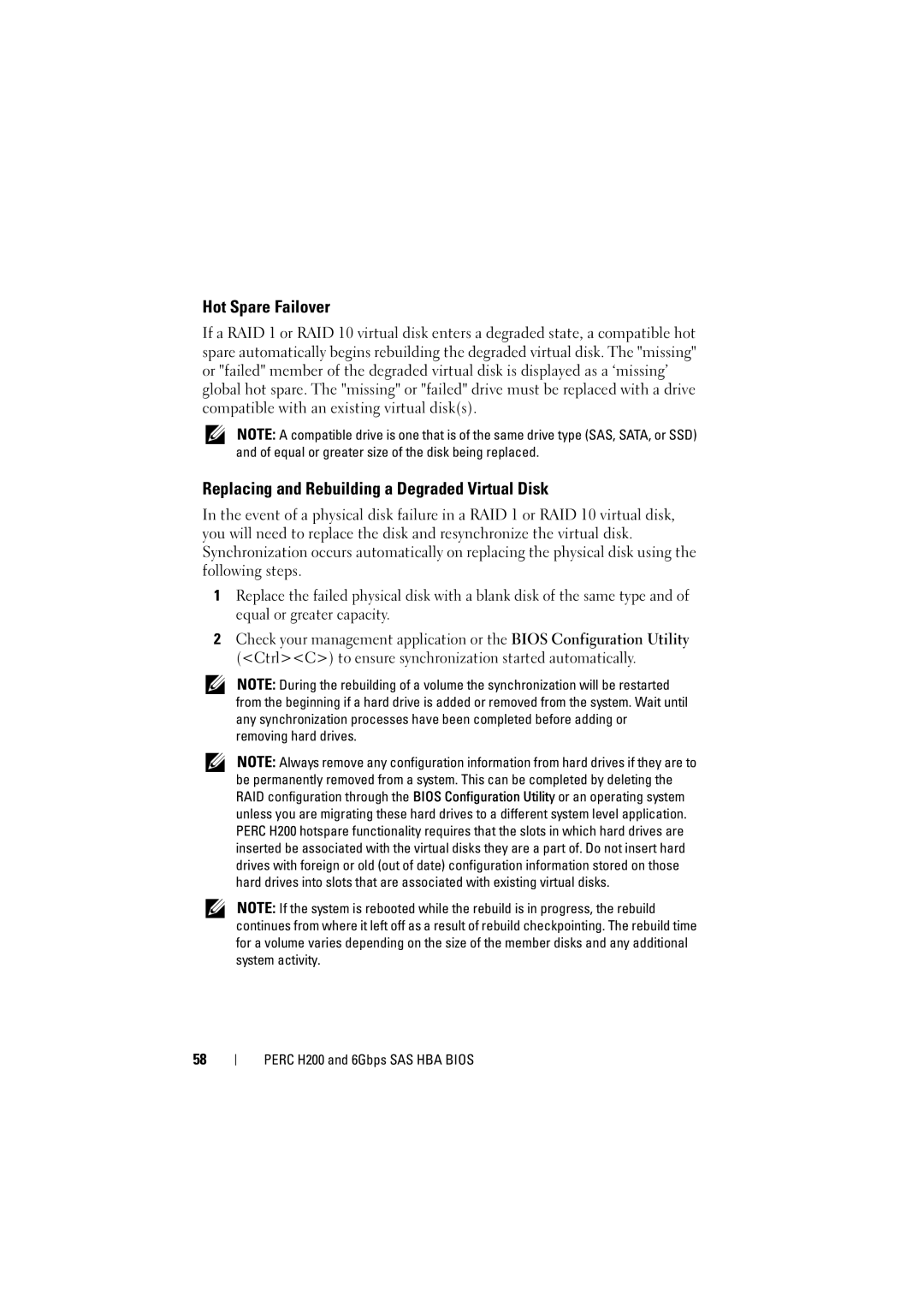Hot Spare Failover
If a RAID 1 or RAID 10 virtual disk enters a degraded state, a compatible hot spare automatically begins rebuilding the degraded virtual disk. The "missing" or "failed" member of the degraded virtual disk is displayed as a ‘missing’ global hot spare. The "missing" or "failed" drive must be replaced with a drive compatible with an existing virtual disk(s).
NOTE: A compatible drive is one that is of the same drive type (SAS, SATA, or SSD) and of equal or greater size of the disk being replaced.
Replacing and Rebuilding a Degraded Virtual Disk
In the event of a physical disk failure in a RAID 1 or RAID 10 virtual disk, you will need to replace the disk and resynchronize the virtual disk. Synchronization occurs automatically on replacing the physical disk using the following steps.
1Replace the failed physical disk with a blank disk of the same type and of equal or greater capacity.
2Check your management application or the BIOS Configuration Utility (<Ctrl><C>) to ensure synchronization started automatically.
NOTE: During the rebuilding of a volume the synchronization will be restarted from the beginning if a hard drive is added or removed from the system. Wait until any synchronization processes have been completed before adding or removing hard drives.
NOTE: Always remove any configuration information from hard drives if they are to be permanently removed from a system. This can be completed by deleting the RAID configuration through the BIOS Configuration Utility or an operating system unless you are migrating these hard drives to a different system level application. PERC H200 hotspare functionality requires that the slots in which hard drives are inserted be associated with the virtual disks they are a part of. Do not insert hard drives with foreign or old (out of date) configuration information stored on those hard drives into slots that are associated with existing virtual disks.
NOTE: If the system is rebooted while the rebuild is in progress, the rebuild continues from where it left off as a result of rebuild checkpointing. The rebuild time for a volume varies depending on the size of the member disks and any additional system activity.
58
